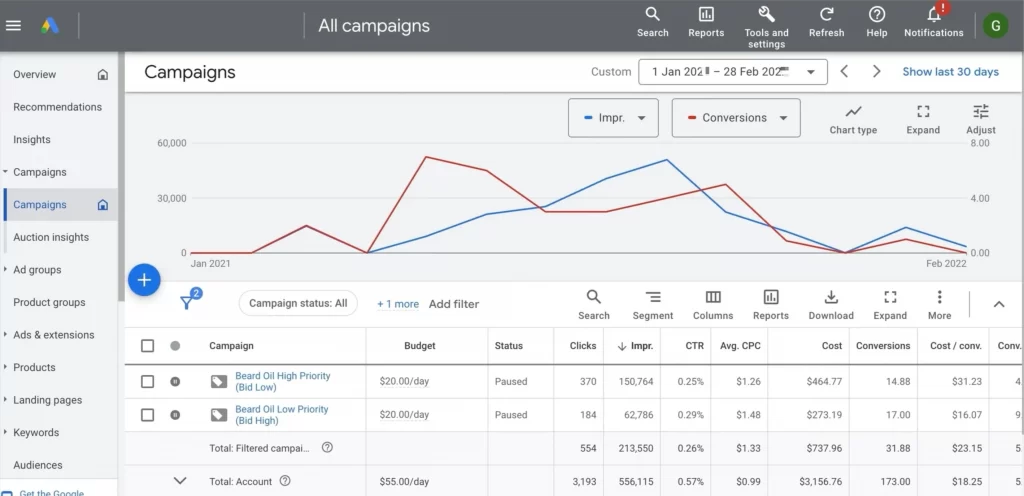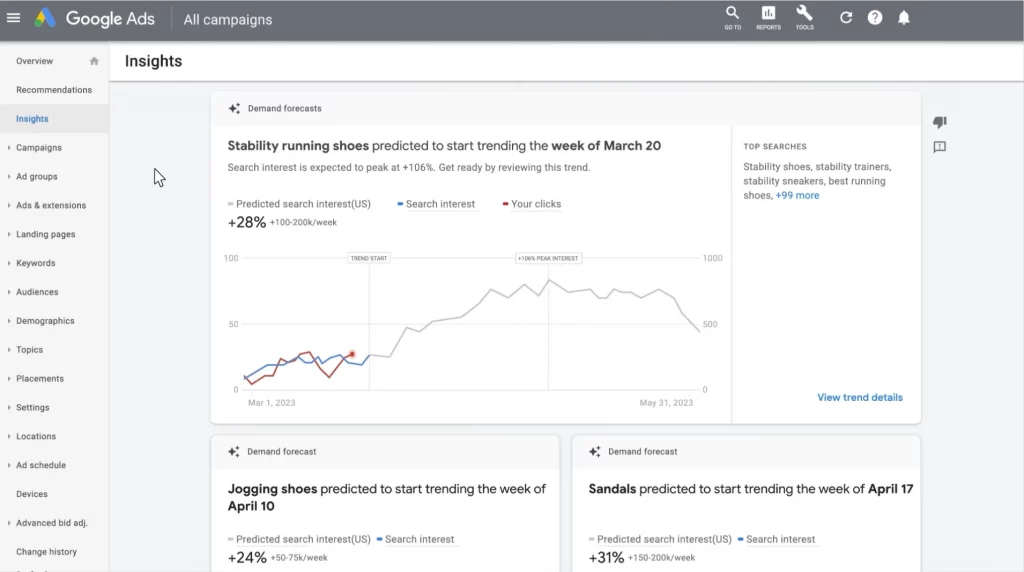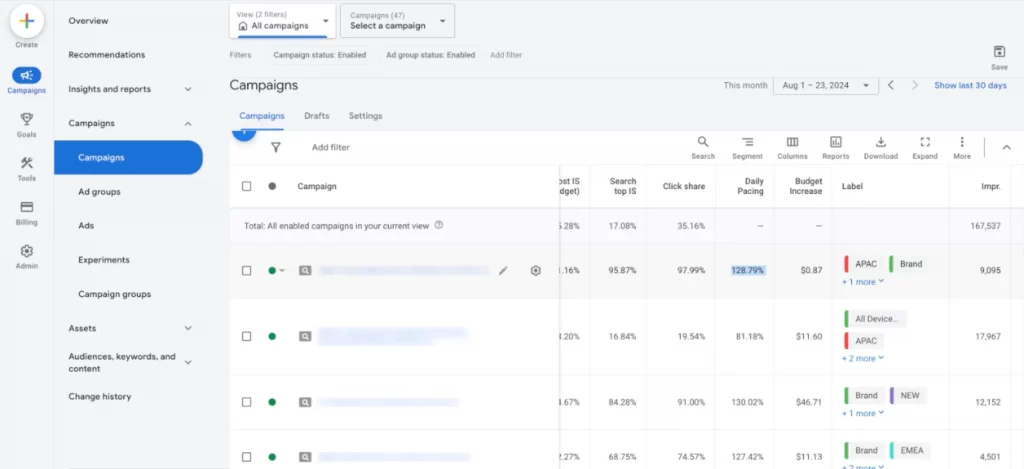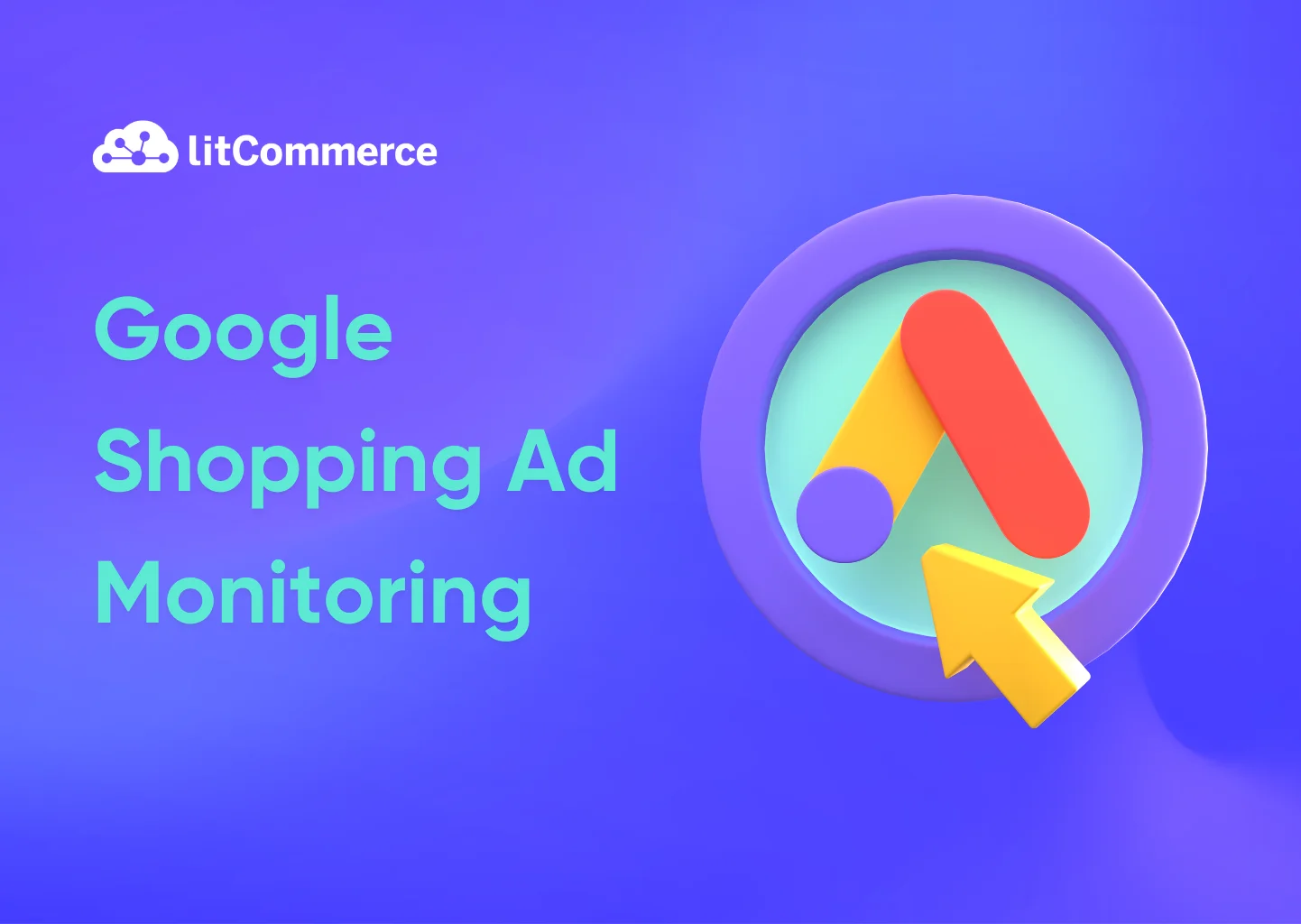Running Google Shopping ads is a great way to show your products to shoppers. But just running ads isn’t enough. To get good results, you need to keep an eye on your Google Shopping ads and see how they’re doing. That’s what Google Shopping Ads monitoring is all about.
By tracking your ads, you can learn what’s working, what’s not, and how to improve. This helps you spend money wisely and get better results. Tools like Google Shopping monitor or AdWords Shopping Ads monitoring give you a clear picture of how your ads perform and how your products show up in search results.
Whether you’re doing Google Shopping competitor analysis or simply checking your performance, a good monitoring setup saves time, money, and stress.
Benefits of Google Shopping Ads Monitoring
Keeping track of your Shopping ads every day can seriously improve how well they work. Let’s go over why Google Shopping Ads monitoring is a must if you want more sales, better performance, and less wasted ad spend.
1. Improved campaign health and efficiency
Daily monitoring helps you spot and fix issues fast—like feed errors or disapproved products—so your ads stay live and ready to sell.
- Your ads stay active and fully optimized.
- 76% of Shopping ad budgets bring in direct revenue—way better than the 63% average for search ads.
- This shows just how powerful active monitoring really is.

2. Valuable performance insights
Watching key numbers helps you see what’s working and what needs a change. The main ones include:
- CTR (Click-Through Rate): Average is 0.86%
- CPC (Cost Per Click): Only $0.66 on average
- Conversion Rate: About 1.91%, with some niches hitting 3.3%
Plus, ads with star ratings get 24% more clicks, and seller ratings boost CTR by 17%. These numbers prove how valuable it is to monitor Google Shopping metrics closely.
3. Identifying trends and patterns
When you check your Shopping ads often, you start to notice trends—like which products sell best during certain seasons.
- Google Shopping sees 1.2 billion searches every month.
- Spotting trends early helps you ride the highs and prepare for the lows.
That’s why regular Google Shopping monitoring can really pay off.

4. Competitive advantage
With tools like Auction Insights and Google Shopping competitor analysis, you can keep tabs on your rivals—see their prices, products, and strategies. Shopping ads get 85.3% of all retail clicks—so knowing what your competitors are doing helps you stay ahead.
This kind of shopping engine search monitor helps you win more customers and smarter traffic.
5. Higher conversion rates and ROI
Google Shopping ads often perform better than regular search ads:
- 30% higher conversion rates on average
- Some industries even see up to 40–50% better results
- Average cost per conversion is just $38.87—about $10 cheaper than text ads
- ROAS (Return on Ad Spend) ranges from 300% to 800%
(That’s $3–$8 back for every $1 you spend)
All of this makes AdWords Shopping monitoring one of the smartest ways to spend your ad dollars.
6. Budget optimization
Daily pacing helps you stay in control of your Google Ads budget. Start by dividing your monthly budget by 30.4 to get your target daily spend. For example, if your monthly budget is $900, your daily target is about $29.61.
If you’re over-pacing—say you’ve spent $250 after 7 days instead of the expected $207—reduce bids, pause low-performing keywords, or limit ad schedules to top-performing hours.
If you’re under-pacing—maybe you’ve only spent $150—consider raising bids, expanding location targeting, or switching to Maximize Conversions to increase traffic.

7. Enhanced product visibility and engagement
Shopping ads grab more attention than regular search ads:
- Up to 5x more engagement
- 85% of product clicks come from Shopping campaigns
- 58% of product searches begin on Google
So if you’re not watching your ads closely, you’re likely missing out on big opportunities to be seen.
8. Sustained revenue growth
Retailers who stay on top of their feeds and monitor Google Shopping performance properly see real, lasting results. On average, they report 42% year-over-year growth in revenue from Shopping campaigns alone.
That’s what happens when you monitor often and optimize smart.
Key Metrics to Track for Google Shopping Performance
To run better ads and get more sales, you need to watch the right numbers. Good Google Shopping Ads monitoring means knowing what to look at—and what to do next. Here are the top 10 metrics that really matter, explained in simple terms with tips you can use right away.
1. Conversion rate
What it is: The percent of people who click your ad and end up buying.
Why it matters: It shows if your ad and product page are doing their job—turning views into sales.
Tips to improve:
- Average is 1.91%, but top sellers can hit 3.3%.
- Use clear titles and high-quality images—images alone can boost sales by up to 94%.
- Make sure your landing pages are quick, clear, and easy to shop.
- A/B test your titles, images, and product pages to see what works best.
2. Click-through rate (CTR)
What it is: The percent of people who see your ad and click on it.
Why it matters: High CTR means your ad grabs attention.
Tips to improve:
- The average is about 0.86%.
- Use strong titles with keywords people are actually searching for.
- Add high-quality images and highlight key features or deals.
- Use negative keywords to block unrelated clicks.
3. Cost per click (CPC)
What it is: The average amount you pay for each click on your ad.
Why it matters: It helps you stay on budget and measure cost efficiency.
Tips to improve:
- Average CPC for Shopping ads is $0.66—lower than text ads.
- Use automated bidding tools like Target CPA or Target ROAS.
- Segment campaigns by product type, price, or margin to spend smarter.
4. Cost per acquisition (CPA)
What it is: How much it costs you to get one sale.
Why it matters: It shows how efficient your campaign is.
Tips to improve:
- Optimized feeds can cut CPA by 20%.
- Remove products that aren’t converting.
- Try different bidding strategies to find what’s most cost-effective.
5. Return on ad spend (ROAS)
What it is: How much money you make for every dollar you spend on ads.
Why it matters: ROAS = Profit. The higher, the better.
Tips to improve:
- Most Shopping campaigns see ROAS between 300% and 800%.
- Use Target ROAS bidding after you get at least 30–50 conversions.
- Focus more budget on bestsellers and high-margin items.
6. Impression share
What it is: How often your ads show up compared to how often they could show.
Why it matters: Shows how visible you are vs. competitors.
Tips to improve:
- If it’s low, try increasing your bids or daily budget.
- Split campaigns into categories or brands to boost top items.
7. Product feed health & approval rate
What it is: How many of your products are active and approved in Google Shopping.
Why it matters: If your products aren’t approved, they can’t show in ads.
Tips to improve:
- Fill out every product field: title, description, images, GTIN, etc.
- Watch for feed errors or disapprovals—and fix them quickly.
- A clean feed = more chances to sell.
8. Average order value (AOV)
What it is: How much money people spend, on average, per order.
Why it matters: Bigger orders = more revenue per customer.
Tips to improve:
- Use bundles, upsells, or discounts to raise the average.
- Try free shipping over a certain amount to boost cart size.
9. Bounce rate
What it is: The percent of people who land on your page and leave without doing anything.
Why it matters: A high bounce rate means your page isn’t working.
Tips to improve:
- Match your landing page to what your ad promises.
- Make checkout quick and easy.
- Test different product page layouts and content.
10. Negative keyword share
What it is: How many irrelevant search terms you’re blocking with negative keywords.
Why it matters: It saves money and gets better traffic.
Tips to improve:
- Check search term reports weekly.
- Add negatives for terms that don’t lead to sales.
- Focus your spend on high-intent searches only.
By keeping an eye on these key metrics, you’ll run smarter campaigns, cut waste, and grow your sales. This is what great Google Shopping monitoring looks like—real numbers, clear steps, and strong results.
You may also like: 12 Pro Tips for Google Shopping Optimization in 2025.
Best Google Shopping Ads Monitoring Tactics
Running Google Shopping ads is just the start. To get the most out of them, you need smart monitoring and regular updates. These 7 tactics will help you boost clicks, improve ROI, and beat the competition—with real stats and tips you can use right away.
1. Segment campaigns by performance (winners & losers)
What to do: Split your campaigns into two groups: top performers and underperformers.
- Winners: Products with high ROAS (over 300%)—give these more budget.
- Losers: Pause or lower bids on items with low ROAS (under 200%).
Why it works: Google Shopping Ads can bring in up to 85% of all product clicks in retail. By separating winners from losers, you get better control over spend and results.
Tip: Use Google Ads’ Predefined Reports to check product-level data every week.
2. Strategic campaign structure & product grouping
What to do: Organize products into campaigns by category, brand, price, or margin. Use custom labels to tag your items clearly.
Why it works: CTR for Shopping ads averages 0.86%, but some niches hit 8.92%—like “Collectibles & Gifts.” Grouping lets you focus more spend on high-return items.
Tip: Create separate campaigns for high-margin products so you can bid more aggressively where it matters most.
3. Continuous product feed optimization
What to do: Keep your product feed up to date. Check titles, images, descriptions, and details often.
Why it works:
- Google’s Merchant Center Next (2025) allows live updates to your feed.
- High-quality images can improve conversion rates by up to 94%.
Tip: Fix any feed errors right away. Even one disapproved product can lower overall visibility.
4. Monitor key metrics and trends
What to do: Watch these key numbers daily: CTR, CPC, conversion rate, CPA, and ROAS.
Useful stats:
- Average CTR: 0.86%
- Average CPC: $0.66
- Average Conversion Rate: 1.91% for Shopping (vs. 6.96% across all Google Ads)
- Average CPA: $38.87
Tip: Set up alerts for sudden changes in these metrics so you can take action quickly.
5. Use competitive intelligence
What to do: Use Auction Insights and the new Google Competitor Price Intelligence to track how your ads compare to others.
Why it works: In 2025, Google added real-time competitor benchmarking. You can now see how your prices stack up and who’s outranking you.
Tip: If your impression share drops, check if competitors have lowered prices or increased bids—and adjust accordingly.
6. Implement negative keywords and query sculpting
What to do: Block unwanted clicks by adding negative keywords. This keeps your budget focused on real buyers.
Why it works: Wasted clicks can eat up 20–30% of your budget if not managed well.
Tip: Review your search terms weekly. For large accounts, use automated rules or scripts to stay on top of negatives.
7. Automate monitoring and optimization
What to do: Use tools, scripts, or Google’s built-in automation to handle updates, bidding, and inventory changes.
Why it works: Google’s new Performance Max and Merchant Center Next features now cover YouTube, Display, Discovery, and more—giving you more reach with less manual work.
Tip: Automation saves time and keeps your performance strong—even when you’re not online.
Check our guide on 11+ Tips for Google Shopping Feed Optimization – What Experts Recommend.
Google Shopping Ads Monitoring: FAQs
Shoppers click. You pay. But how do you know it’s working? These quick questions and answers will help you better understand how Google Shopping monitoring works—and how to use it to your advantage.
What is the difference between Google Ads and Shopping Ads?
Google Ads usually show text ads in search results. You write a headline and description to grab attention.
Google Shopping Ads, on the other hand, show product images, prices, store names, and more. They’re great for eCommerce because shoppers see exactly what they’re getting before clicking. So while both are part of Google Ads, Shopping Ads need more data—like your product feed—and that’s why Google Shopping Ads monitoring is so important.
What is a good CTR for Shopping Ads?
CTR (Click-Through Rate) shows how often people click your ads after seeing them. A CTR between 1% and 2% is common.
What is the purpose of using Shopping Ads in SEM?
SEM stands for Search Engine Marketing, and Shopping Ads are a powerful part of it. They help:
– Show your products directly in search results.
– Bring in ready-to-buy shoppers.
– Track real sales, not just clicks.
– When you use AdWords Shopping monitoring, you get clear info on what’s working and how to grow.
How do I optimize my Shopping Ads?
Here’s a simple list to follow:
– Keep your product feed clean and full of details.
– Use clear product images and keywords that match buyer intent.
– Segment campaigns to manage bids better.
– Add negative keywords to block wasted clicks.
– Use a Google Shopping monitor to track changes and results.
Final Thought on Google Shopping Ads Monitoring
If you’re running Google Shopping ads, keeping track of them is not just a nice-to-have—it’s a must. Without Google Shopping Ads monitoring, you’re basically flying blind. You won’t know which products are doing well, where your money’s going, or what changes to make.
The good news? Monitoring doesn’t have to be hard.
By watching the right metrics—like clicks, cost, and profit—you’ll get a clearer picture of what’s working. When you combine that with smart tactics like feed optimization, campaign splits, and keyword tuning, you’ll start to see better results. More clicks. More sales. Less wasted ad spend.And don’t forget the big picture: Google Shopping monitoring helps you stay ahead of your competition. With tools that track your own ads and give you Google Shopping competitor analysis, you can make smarter moves every day.



